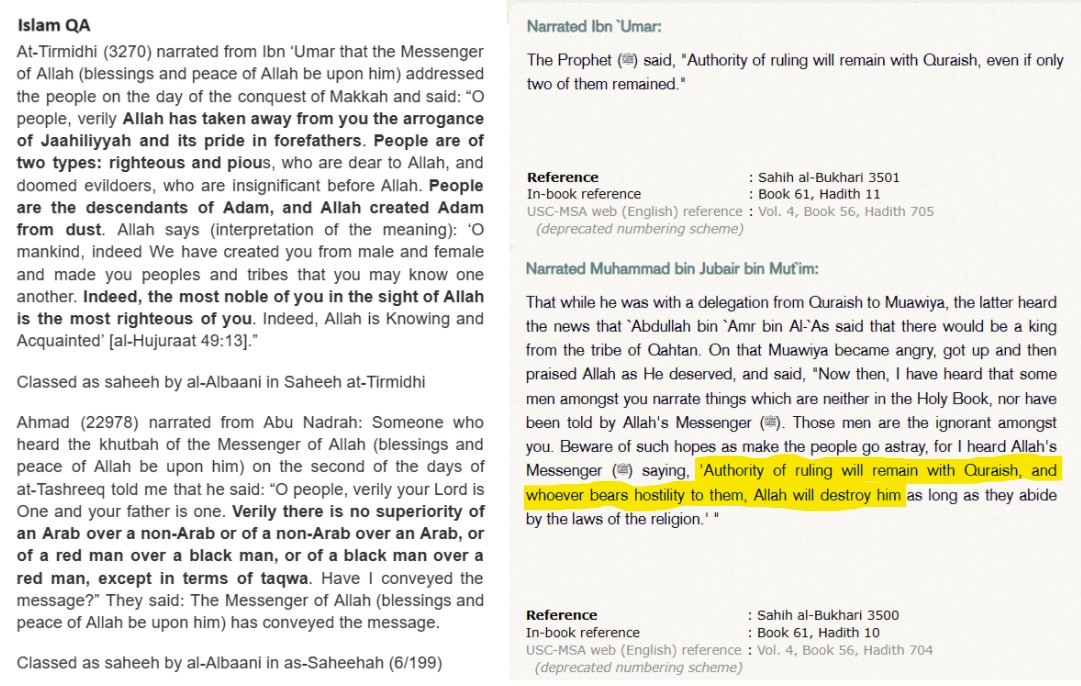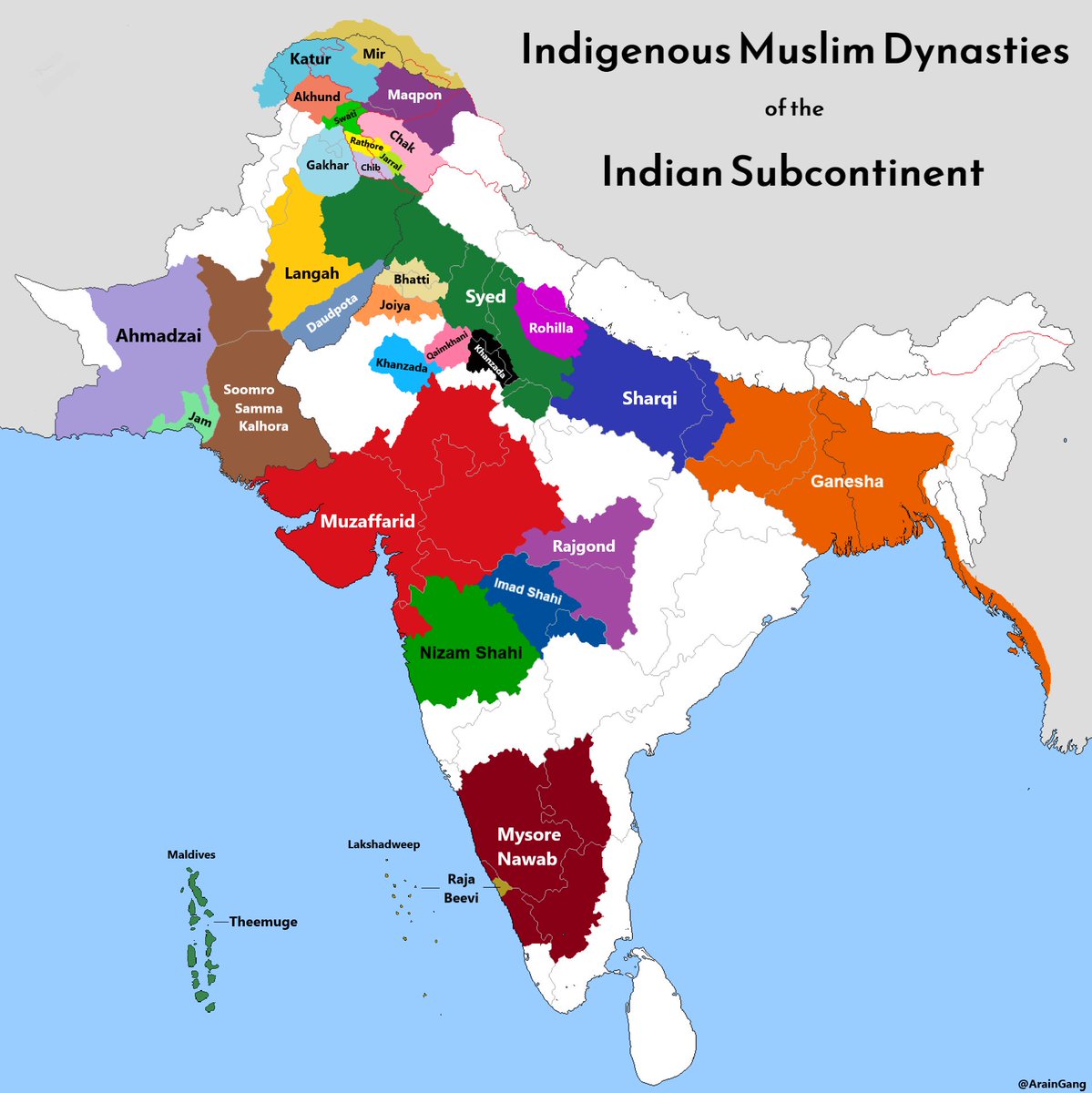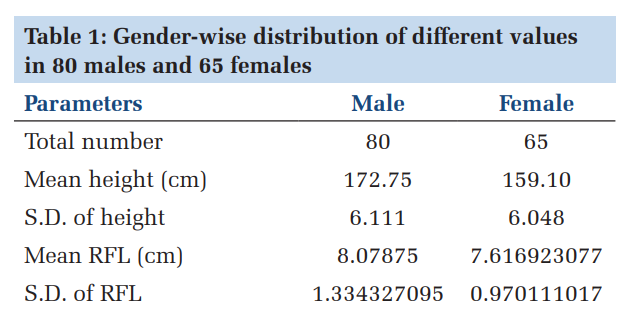Thread on Pakistan as a consumer rather than producer of Islam.
Professor Murad notes “The spiritual heart and scholarly origin of (elite Hanafi) Indian Islam is not in the Subcontinent, but in Central Asia… it was not indigenously evolved, but brought in from Central Asia”
Professor Murad notes “The spiritual heart and scholarly origin of (elite Hanafi) Indian Islam is not in the Subcontinent, but in Central Asia… it was not indigenously evolved, but brought in from Central Asia”
This partly stems from the attitude of certain Indo-Muslim elite, who believed Indians should be kept low and taught only the essentials of Islam, as scholarship and administration belonged to foreign Muslims and their descendants.
Excerpt from 14th century writer Ziaudin Barani
Excerpt from 14th century writer Ziaudin Barani

17th century Fatawa 'Alamgiri sponsored by Aurangzeb was compiled by 500 scholars (40% Arab), and served as the Mughal Empire’s source of Islamic law.
It affirmed Arab Muslims were superior to non-Arab Muslims, and held more recently converted Muslim communities in low regard.
It affirmed Arab Muslims were superior to non-Arab Muslims, and held more recently converted Muslim communities in low regard.

In the 18th century we see the formal import of Salafism into India, via influential scholar Shah Waliullah Dehlawi, who instructs Indian Muslims to hold themselves aloof from local customs, and instead concern themselves with Arab culture. 

Such beliefs found their strongest support among the urban Indo-Muslim elite, in regions which also boasted relatively low rates of conversion to Islam.
Conversely, certain regions more peripheral to elite Indo-Muslim authority adopted Islam at higher rates.
Conversely, certain regions more peripheral to elite Indo-Muslim authority adopted Islam at higher rates.

Professor Richard Eaton observes that in periphery regions like Punjab and Bengal, it was the Sufi saints and Pir pioneers who syncretized with the locals and gradually introduced Islam using unorthodox methods. 

Examples below on the methods Sufis used in Punjab and Bengal to successfully plant the seed of Islam, methods frowned upon by sections of the traditional Hanafi elite, and considered blasphemous altogether by the emerging Salafis.




In the 19th century groups like Deoband and Jamaat-e-Islami arose among the Indo-Muslim elite, seeking to replace established elite Hanafi and grassroot Sufi traditions with imported Salafism, thereby standardizing Islamic practice and combating Hindu/Christian missionaries.
Soon however the political liability of such groups became evident; they resisted the Aligarh movement’s attempts to modernize Muslim education and opposed the creation of Pakistan on the grounds of its leadership being secular, and belief that nationalism was a sin.
After partition these reform groups became powerful in Pakistan, but turned increasingly puritanical by continued import of Salafism from Saudi Arabia, which led to increased marginalization and even violence against Hanafis, Sufis, Shias, Ahmadis, Free-Thinkers, and non-Muslims. 

Early Indo-Muslim elite imported Central-Asian Hanafism, next Arab Salafism was imported, while the indigenous Sufi culture has been marginalized. Even Shias look to Iran.
Pakistan is a consumer, not producer, of Islam, yet wants to make Islam the basis of Pakistan’s existence?
Pakistan is a consumer, not producer, of Islam, yet wants to make Islam the basis of Pakistan’s existence?
An alternative would be a shift from ideological to territorial nationhood, leaning on Harappan, Buddhist, and Sufi heritage, replacing Salafism with a rationalist Islamic ideology.
Or will Pakistan wait for Saudi to liberalize and then import that as well?
Or will Pakistan wait for Saudi to liberalize and then import that as well?

• • •
Missing some Tweet in this thread? You can try to
force a refresh


















